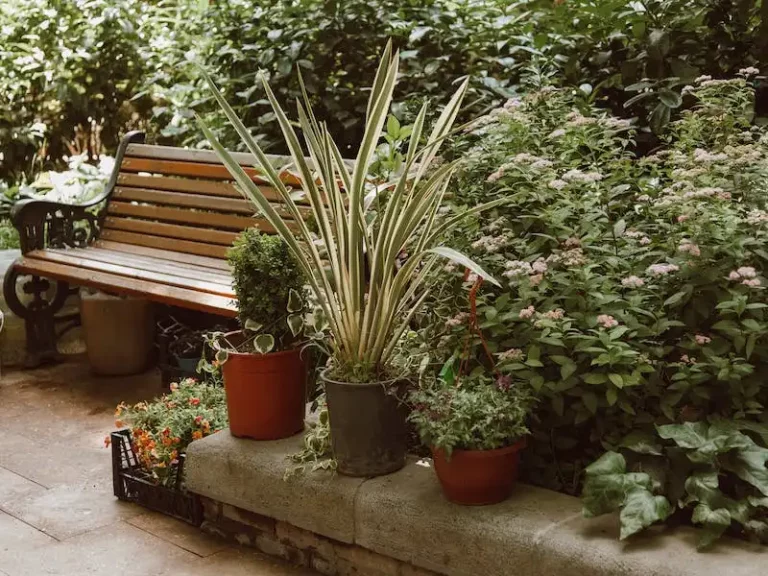When it comes to growing cucumber plants, many gardeners wonder just how tall these plants can get. Cucumbers are known for their vigorous growth and can easily reach incredible heights if left to their own devices. However, with the right growing techniques and management, you can control the height of your cucumber plants to fit your garden’s needs.
One popular method for managing the height of cucumber plants is to use trellises. By providing vertical support for the plants to climb, trellises allow the cucumber vines to grow upward rather than sprawling across the ground. This not only saves space in the garden but also helps to promote better air circulation, reduce the risk of disease, and make harvesting the cucumbers much easier.
Cucumber plants are naturally inclined to grow tall, but there are certain factors that can affect their ultimate height. For example, the type of cucumber variety you choose to plant can play a role. Marketmore 101, for instance, is a popular variety that is known for its tall and vigorous growth. On the other hand, there are varieties like the Picklebush that are specifically bred to be shorter and more compact.
The environment in which the cucumber plants are grown can also impact their height. Cucumbers thrive in warm temperatures and will typically grow taller in these conditions. If you are growing cucumbers in a colder climate, you may need to provide additional warmth, such as by using plastic covers or cloches, to help the plants reach their full potential.
When it comes to fertilizing cucumber plants, there are a few cultural practices to keep in mind. First, it is recommended to apply a balanced fertilizer when planting the cucumbers. This will provide the necessary nutrients for the plants to grow and establish strong roots. Second, as the plants start to flower and set fruit, providing a side-dressing of fertilizer can help to ensure continuous growth and fruit production.
Watering is another important aspect of managing the height of cucumber plants. Cucumber plants have shallow roots and need consistent moisture to thrive. Keeping the soil consistently moist but not waterlogged is crucial. Watering deeply and infrequently is usually recommended, allowing the soil to dry out slightly between watering sessions.
In conclusion, the height of cucumber plants can vary depending on various factors such as the variety, growing conditions, fertilizing, watering, and even trellising. By following the proper cultural practices and providing the necessary care, it is possible to control the height of cucumber plants and achieve successful growth in your garden.
Growing Cucumbers Vertically Tips for Success
If you want to maximize your cucumber plant’s growth and fruit production, growing them vertically is a great option. This method allows you to save space in your garden or containers while still enjoying an abundant harvest. Here are some tips to help you succeed:
Selecting the right variety: When choosing cucumber varieties for vertical growing, look for compact and dwarf varieties that don’t require much space. Some recommended varieties include ‘Spacemaster’, ‘Bush Champion’, and ‘Patio Snacker’.
Providing support: Cucumber plants need a structure to climb on, such as a trellis, fence, or stakes. Attach slings or clips to help support the vines as they grow.
Indoors or outdoors: Cucumbers can be grown vertically both indoors and outdoors. If you’re planting them indoors, make sure to provide enough light and warm, climatic conditions for optimum growth.
Planting and seeding: When planting your cucumber seeds or seedlings, make sure to space them properly. Cucumbers need enough room to grow and produce fruit. Plant them about 12 inches apart to give them room to spread.
Watering: Cucumber plants need regular watering, especially during hot summer months. Keep the soil consistently moist but not waterlogged to avoid disease and overwatering.
Sun exposure: Cucumber plants thrive in full sun. Make sure to select a location with at least 6-8 hours of direct sunlight for optimal growth and fruit production.
Pests and disease control: Cucumber plants are prone to certain pests and diseases, such as cucumber beetles and powdery mildew. Regularly inspect your plants and take necessary measures to prevent and treat any issues that arise.
Harvesting: When your cucumbers have reached the right size and are firm, pick them off the vine using sharp scissors or a knife. Harvesting regularly will encourage the plants to produce more fruit.
Additional tips: If you’re growing cucumbers for pickling, look for varieties specifically bred for this purpose, such as ‘Boston Pickling’ or ‘County Fair’. Also, be aware that cucumbers grow quickly, so check your plants daily for new growth or any signs of damage.
By following these tips, you can successfully grow cucumbers vertically and enjoy a bountiful harvest in your own garden or containers.
Choosing a Cucumber Trellis
When deciding how to support your cucumber plants as they grow, choosing the right trellis is essential. Cucumber plants thrive when given support, as it allows air to circulate around the foliage and reduces the risk of diseases.
There are several trellis options to consider for your cucumbers:
1. Stake and Twine: This method involves placing stakes at the end of each row and running twine between them at regular intervals. The cucumber vines will then grow up the twine, keeping them off the ground.
2. A-Frame Trellis: This type of trellis resembles an A shape and is made of two stakes or posts with a crossbar between them. The cucumber vines can be trained to grow up the sides of the A-frame, creating a visually appealing display.
3. Cattle Panels: Cattle panels are sturdy and can support multiple cucumber plants. They can be placed vertically or horizontally, depending on the space available.
4. Tomato Cages: Tomato cages can also be used to support cucumber plants. They provide a convenient structure for the vines to grow up and keep the cucumbers off the ground.
When selecting a trellis, make sure it is tall enough to accommodate the full height of the cucumber plants. Cucumber plants can grow up to 8 feet or more in height, depending on the variety. It’s always a good idea to ask the seed supplier or read the seed packet to determine how tall the cucumbers will grow.
Also, consider the climatic conditions in your area. Cucumber plants prefer full sun and warm temperatures. They are a warm-season vegetable and can be damaged by frost. If you live in a colder climate, you may need to wait until the last frost date has passed before planting your cucumbers.
When preparing the soil for planting, make sure it is well-drained and has been thoroughly amended with organic matter. Cucumbers are heavy feeders and benefit from the addition of fertilizers. Selecting a balanced fertilizer high in nitrogen will help promote healthy growth and fruit development.
Once your cucumber plants have started growing, they will benefit from regular care and maintenance. This includes training the vines to grow up the trellis, pruning off any damaged or diseased leaves, and monitoring for pests and diseases.
It’s important to keep an eye out for common cucumber diseases such as bacterial wilt and downy mildew. If any signs of disease appear, it’s best to remove the affected plant to prevent the spread to others.
In summary, choosing the right trellis for your cucumber plants is important for their growth and fruiting. Consider the height of the plants, your garden space, and the climatic conditions when selecting a trellis. With proper care and support, your cucumber plants will reward you with abundant, delicious cucumbers.
An Alternative Option
If you’re short on space in your garden or simply prefer a neater, more organized look, consider growing cucumber plants on trellises. This alternative method of growing cucumbers allows you to maximize your garden space while also simplifying the process of harvesting.
Trellises are a great solution for managing the height of cucumber plants. Instead of allowing the vines to sprawl across the ground, you can train them to grow vertically along a trellis or fence. By doing so, you can ensure that they won’t take up as much space and fill your garden.
When it comes to trellising cucumbers, there are a few things to keep in mind. First, make sure to select trellising varieties that are specifically bred for this purpose. These cultivars typically have shorter vines and are better suited for vertical growth. Good examples include marketmore and county fair.
Next, you need to provide something for the tendrils of the cucumber plant to attach to as they grow. You can use netting, string, or wire attached to the trellis framework. Just make sure it’s secure enough to support the weight of the growing cucumbers.
Cucumber plants grown on trellises will require extra attention to ensure they have sufficient water and nutrients. The soil should be kept consistently moist, and it’s a good idea to suggest fertilizers that are high in potassium, which promotes fruiting. Additionally, cucumbers prefer warm soils, so make sure to plant them in a sunny location.
Gynoecious cucumbers are a good choice for trellising since they are more resistant to diseases like powdery mildew and bacterial wilt. By selecting disease-resistant cultivar, you can increase your chances of success.
Regularly managing the growth of cucumber plants on a trellis keeps them off the ground, which helps prevent damage from pests and diseases. It also makes it easier to spot and pick ripe cucumbers. Training the plants to grow vertically ensures that they have access to strong sunlight and optimal air circulation.
Remember to provide enough room for the cucumber plants to grow vertically on the trellis. Consider spacing them at least one foot apart to avoid overcrowding. Continue watering and fertilizing as needed, and be sure to monitor for any signs of pests or diseases.
Now that you know about this space-saving alternative option for growing cucumbers, you can give it a try in your own garden. By selecting the right cultivars, providing proper care, and diligently managing the growth, you can enjoy a bountiful harvest of fresh cucumbers all season long.




